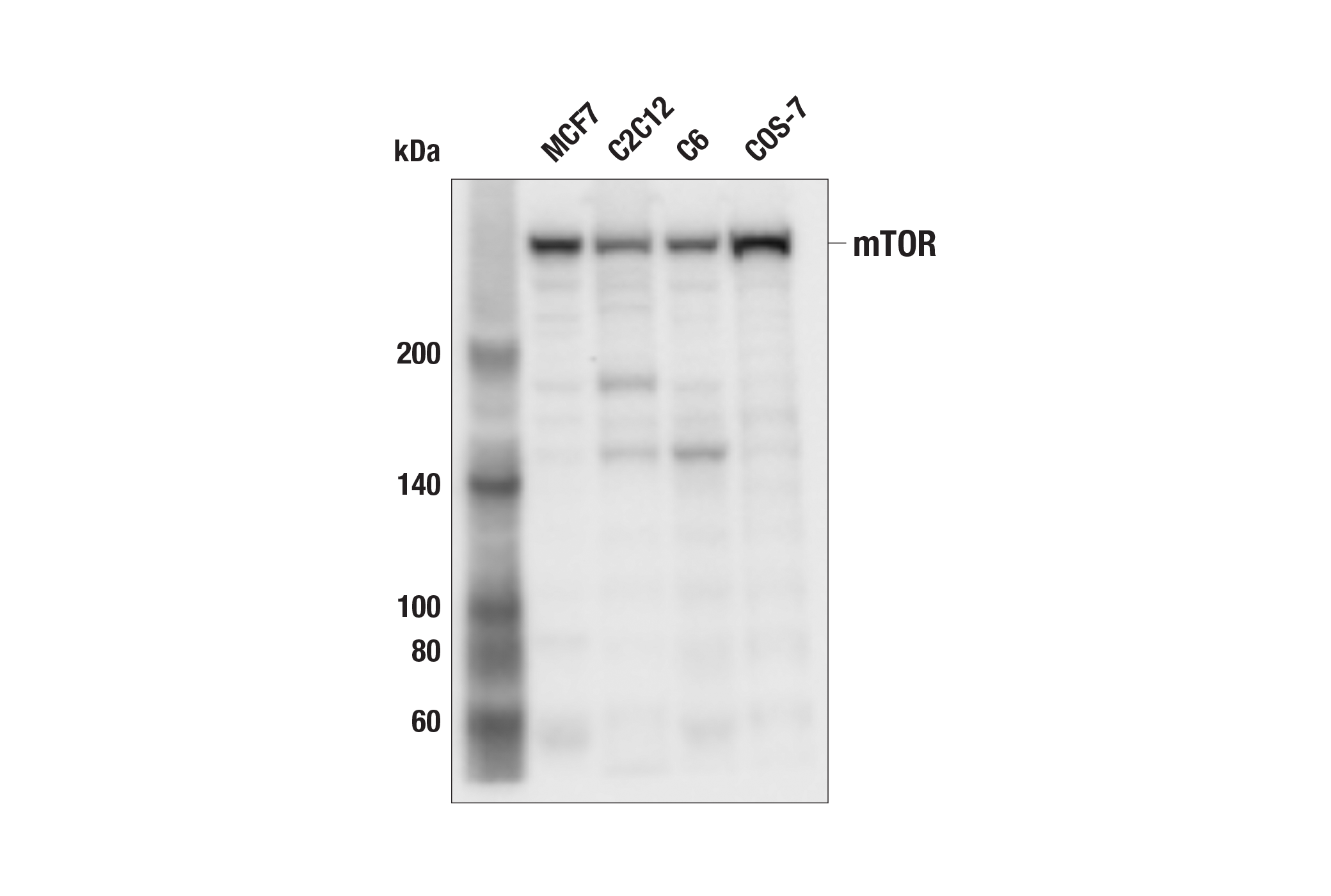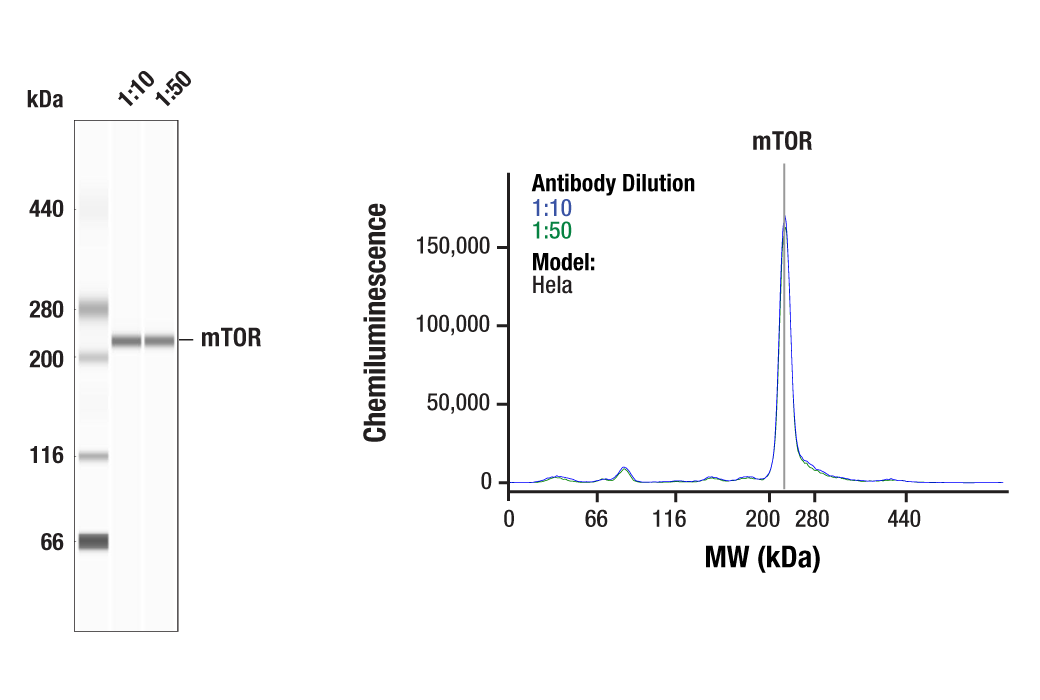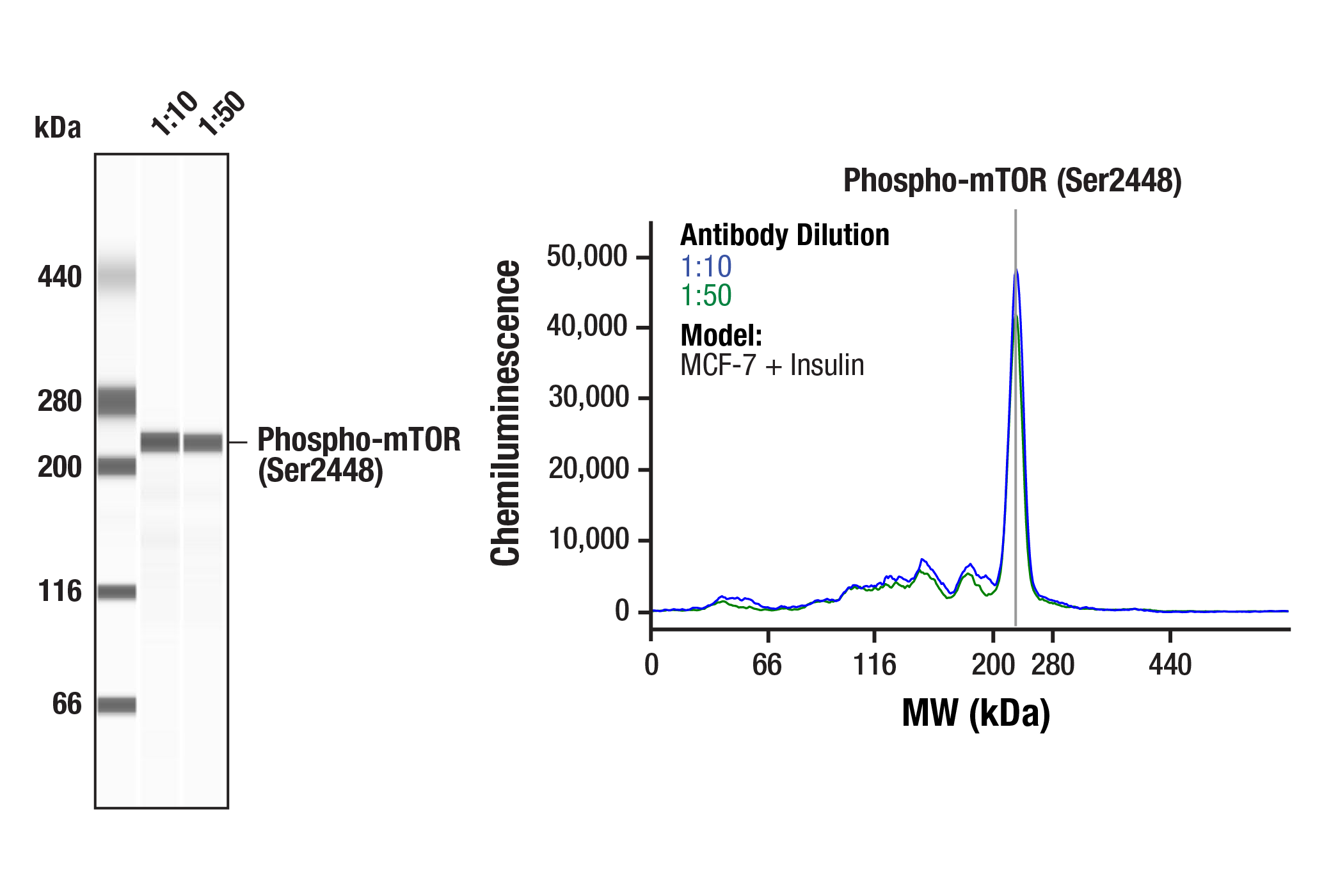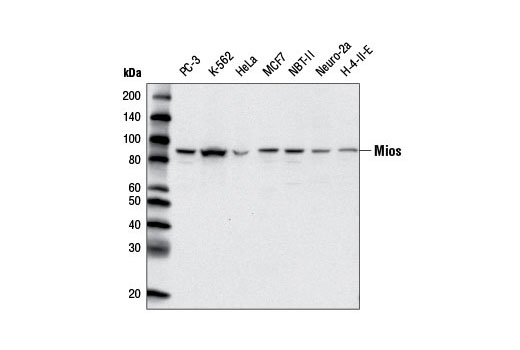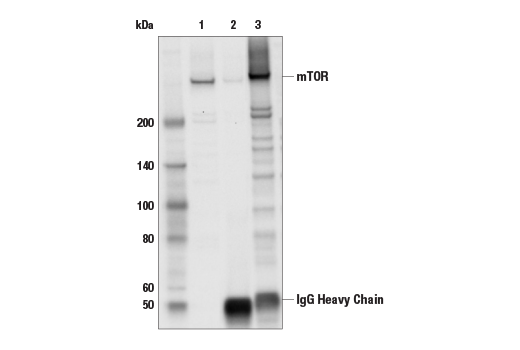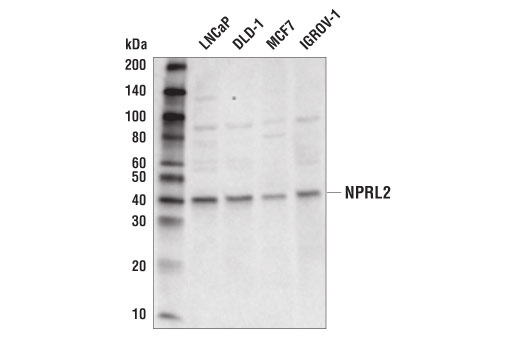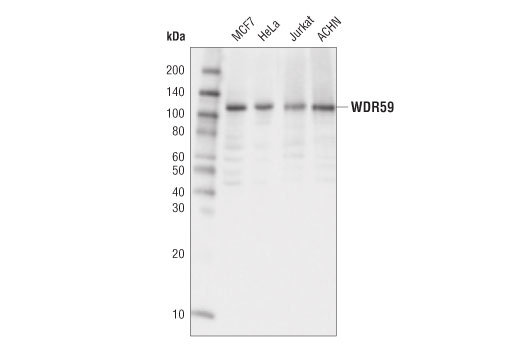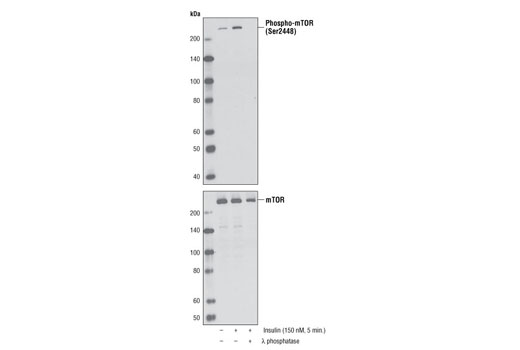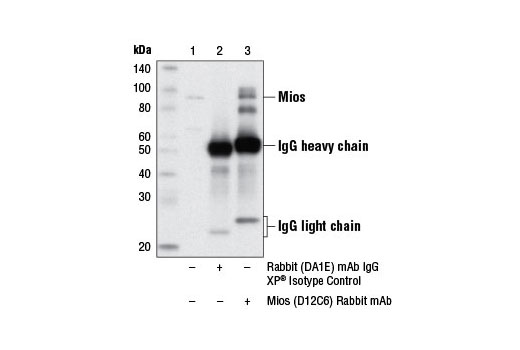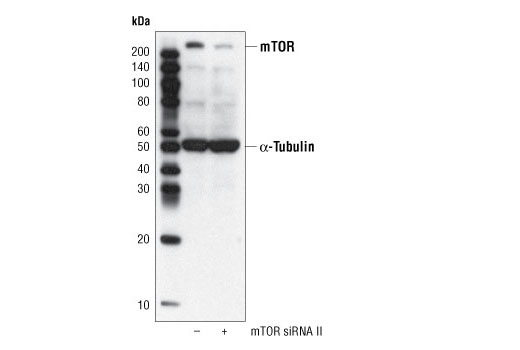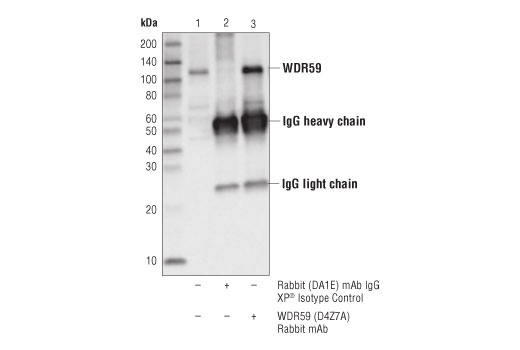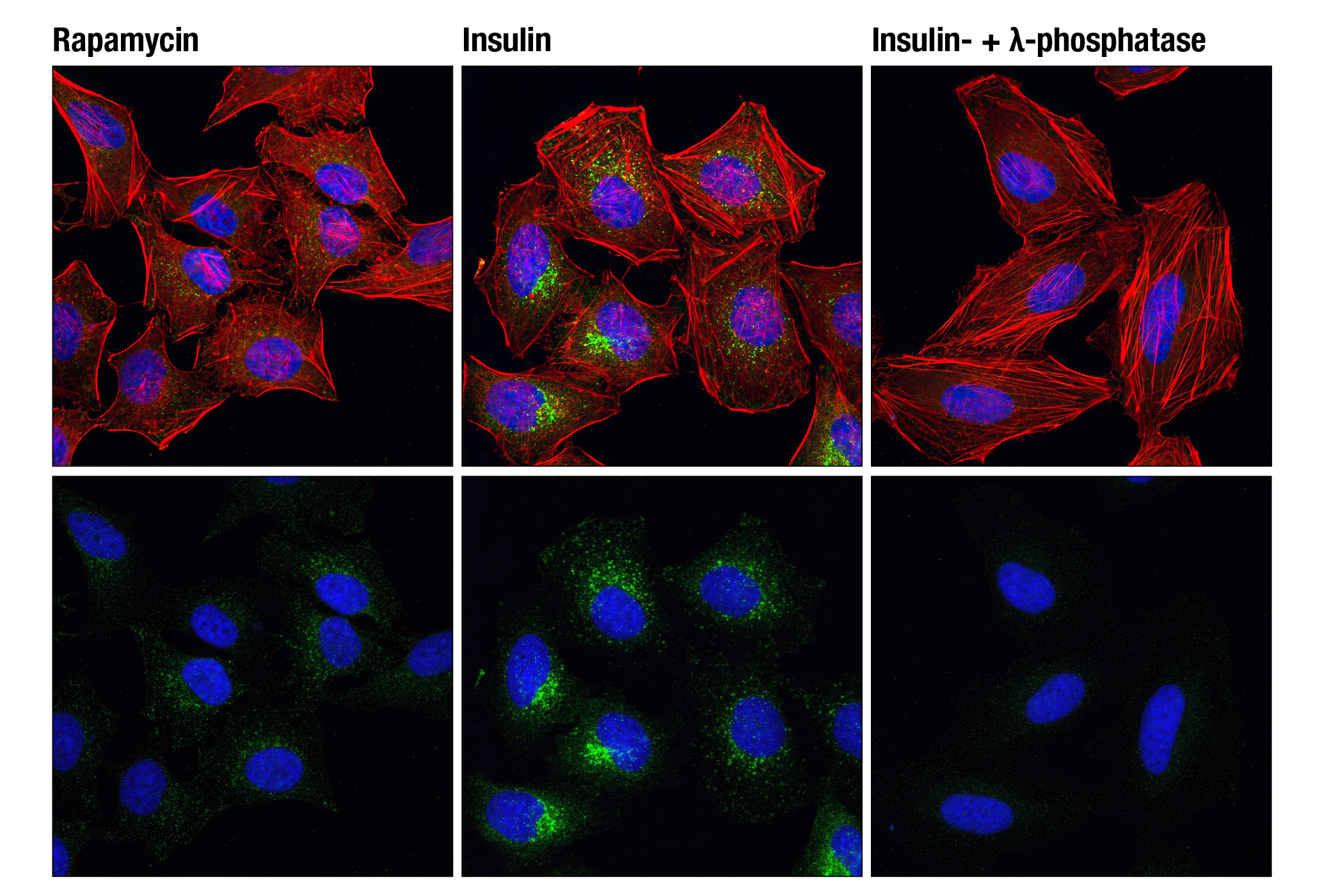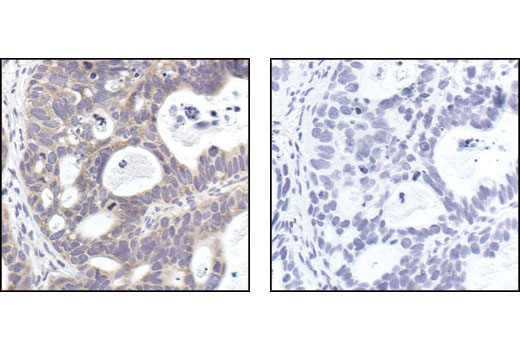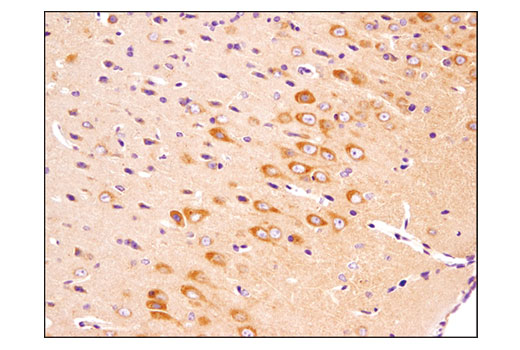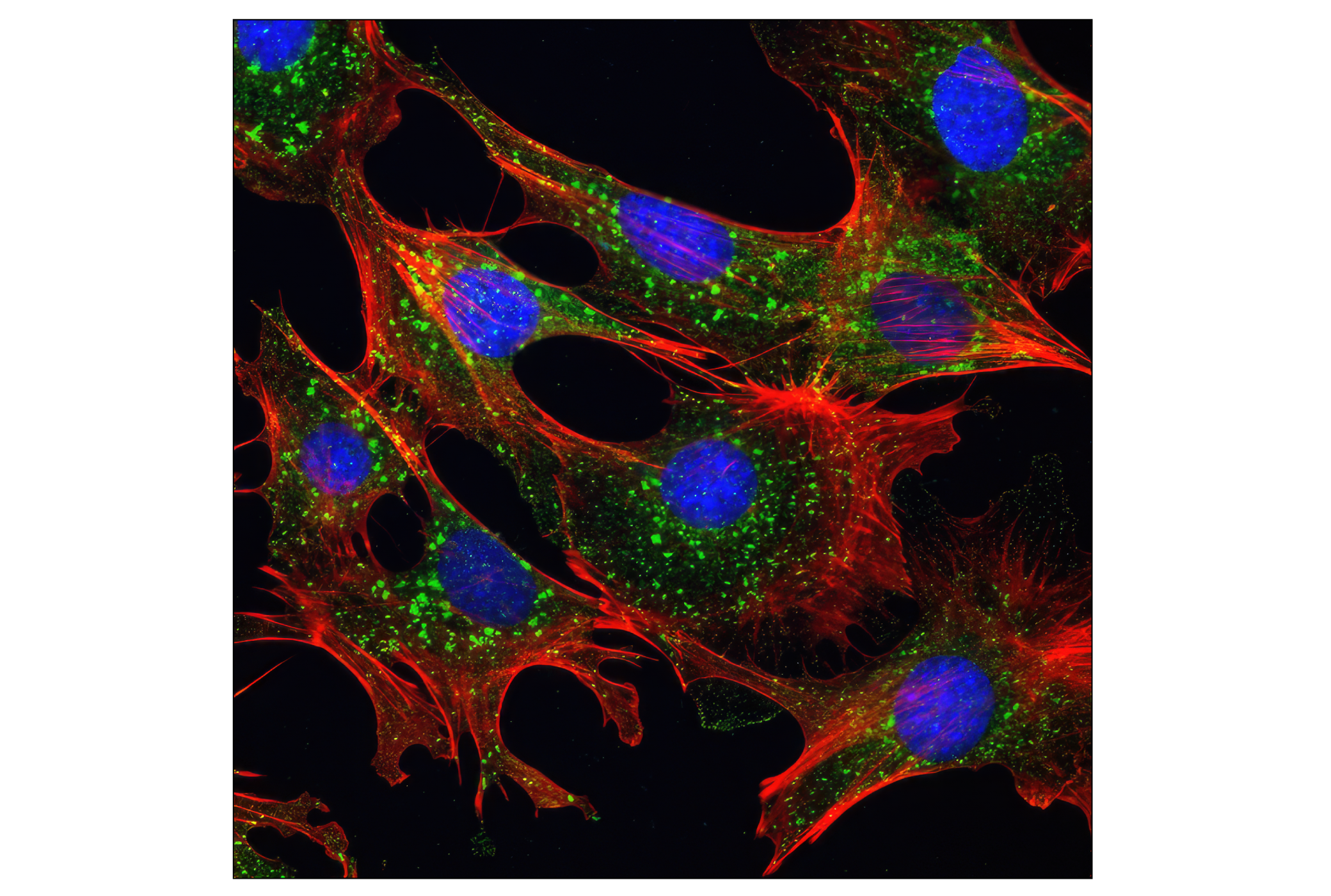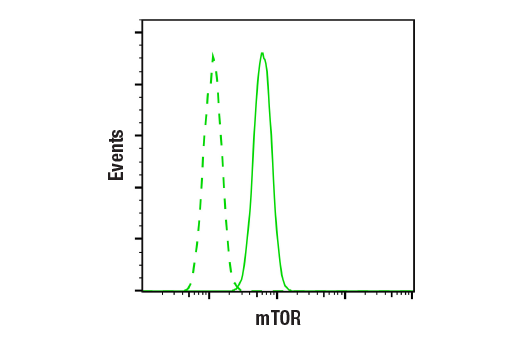| Product Includes | Product # | Quantity | Mol. Wt | Isotype/Source |
|---|---|---|---|---|
| Mios (D12C6) Rabbit mAb | 13557 | 20 µl | 98 kDa | Rabbit IgG |
| NPRL2 (D8K3X) Rabbit mAb | 37344 | 20 µl | 41 kDa | Rabbit IgG |
| WDR59 (D4Z7A) Rabbit mAb | 53385 | 20 µl | 110 kDa | Rabbit IgG |
| mTOR (7C10) Rabbit mAb | 2983 | 20 µl | 289 kDa | Rabbit IgG |
| Phospho-mTOR (Ser2448) (D9C2) XP® Rabbit mAb | 5536 | 20 µl | 289 kDa | Rabbit IgG |
| Anti-rabbit IgG, HRP-linked Antibody | 7074 | 100 µl | Goat |
Please visit cellsignal.com for individual component applications, species cross-reactivity, dilutions, protocols, and additional product information.
Description
The GATOR Complex Antibody Sampler Kit provides an economical means of detecting select components of the GATOR complex, mTOR and phospho-mTOR (Ser2448). The kit contains enough primary antibodies to perform at least two western blot experiments per antibody.
Storage
Background
The mTORC1 kinase complex plays a critical role in cell growth regulation (1,2). mTORC1 activity is modulated by energy levels, growth factors, and amino acids (3,4). Four related GTPases (RagA, RagB, RagC, and RagD) interact with raptor in mTORC1, which is necessary and sufficient for mTORC1 activation in response to amino acid signals (1,2). The GAP Activity Towards Rags (GATOR) complex interacts with Rag GTPases and is made up of a pair of protein subcomplexes (5). The GATOR1 subcomplex includes the proteins DEPDC5, Nprl2 and Nprl3, and is a RagA and RagB GTPase-activating protein (GAP) that negatively regulates mTORC1 signaling. Conversely, the GATOR2 subcomplex (including Mios, WDR24, WDR59, Seh1L and Sec13 proteins) is a positive regulator of mTORC1 signaling (5).
The mammalian target of rapamycin (mTOR, FRAP, RAFT) is a Ser/Thr protein kinase (6-8) that functions as an ATP and amino acid sensor to balance nutrient availability and cell growth (9,10). When sufficient nutrients are available, mTOR responds to a phosphatidic acid-mediated signal to transmit a positive signal to p70 S6 kinase and participate in the inactivation of the eIF4E inhibitor, 4E-BP1 (11). These events result in the translation of specific mRNA subpopulations. mTOR is phosphorylated at Ser2448 via the PI3 kinase/Akt signaling pathway and autophosphorylated at Ser2481 (12,13).
- Sancak, Y. et al. (2008) Science 320, 1496-501.
- Kim, E. et al. (2008) Nat Cell Biol 10, 935-45.
- Hay, N. and Sonenberg, N. (2004) Genes Dev 18, 1926-45.
- Wullschleger, S. et al. (2006) Cell 124, 471-84.
- Bar-Peled, L. et al. (2013) Science 340, 1100-6.
- Sabers, C.J. et al. (1995) J Biol Chem 270, 815-22.
- Brown, E.J. et al. (1994) Nature 369, 756-8.
- Sabatini, D.M. et al. (1994) Cell 78, 35-43.
- Gingras, A.C. et al. (2001) Genes Dev 15, 807-26.
- Dennis, P.B. et al. (2001) Science 294, 1102-5.
- Fang, Y. et al. (2001) Science 294, 1942-5.
- Navé, B.T. et al. (1999) Biochem J 344 Pt 2, 427-31.
- Peterson, R.T. et al. (2000) J Biol Chem 275, 7416-23.
Background References
Trademarks and Patents
Limited Uses
Except as otherwise expressly agreed in a writing signed by a legally authorized representative of CST, the following terms apply to Products provided by CST, its affiliates or its distributors. Any Customer's terms and conditions that are in addition to, or different from, those contained herein, unless separately accepted in writing by a legally authorized representative of CST, are rejected and are of no force or effect.
Products are labeled with For Research Use Only or a similar labeling statement and have not been approved, cleared, or licensed by the FDA or other regulatory foreign or domestic entity, for any purpose. Customer shall not use any Product for any diagnostic or therapeutic purpose, or otherwise in any manner that conflicts with its labeling statement. Products sold or licensed by CST are provided for Customer as the end-user and solely for research and development uses. Any use of Product for diagnostic, prophylactic or therapeutic purposes, or any purchase of Product for resale (alone or as a component) or other commercial purpose, requires a separate license from CST. Customer shall (a) not sell, license, loan, donate or otherwise transfer or make available any Product to any third party, whether alone or in combination with other materials, or use the Products to manufacture any commercial products, (b) not copy, modify, reverse engineer, decompile, disassemble or otherwise attempt to discover the underlying structure or technology of the Products, or use the Products for the purpose of developing any products or services that would compete with CST products or services, (c) not alter or remove from the Products any trademarks, trade names, logos, patent or copyright notices or markings, (d) use the Products solely in accordance with CST Product Terms of Sale and any applicable documentation, and (e) comply with any license, terms of service or similar agreement with respect to any third party products or services used by Customer in connection with the Products.
